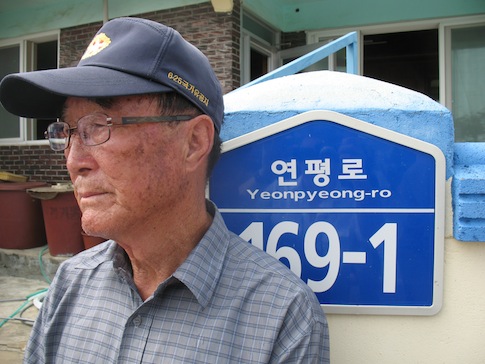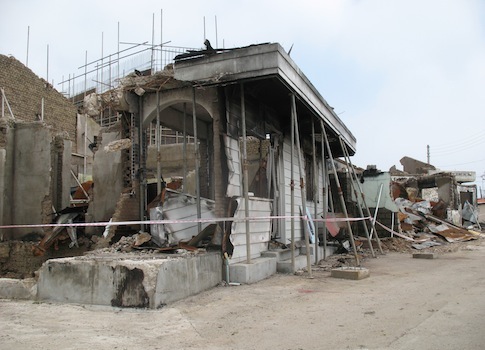YEONPYEONG ISLAND, SOUTH KOREA—He’s 83, but Kim Yoo-sung does not sleep well. "People here can’t sleep right," he said. "People wake up in the middle of the night in fear."
Like everyone on Yeonpyeong, a group of South Korean islands lying just 12.7 km from North Korea’s Yellow Sea coast, Kim remembers the trauma of November 23, 2010, like it was yesterday.
There was a roar, then all the doors and windows of Kim’s house shattered. A veteran of the 1950-53 Korean War, Kim made for a nearby shelter.

Another resident was working in the island’s lighthouse. "There was an unbelievable noise—deafening, indescribable, a noise I’d never heard before," said Kang Myung-sung, 67, now president of the island residents’ committee. "I saw smoke and ran for the shelter."
That morning, South Korean forces had been carrying out artillery drills, firing into open waters west of the island. To the northeast, North Korea telexed South Korea, demanding a halt. After South Korea ignored the demand, North Korean forces opened fire with rockets and artillery.
A barrage screamed into Yeonpyeong, smashing buildings, and setting hillside foliage alight, killing four and wounding nineteen. South Korean artillery on the island replied (though satellite photos later suggested their fire was ineffective).
After two-and-a-quarter hours, the firing ceased. It was—and remains—the only inter-Korean artillery exchange since the Korean War.
Even today, signs of the attack are difficult to miss among the cottages and alleyways of Yeonpyeong’s port.
A gaping hole in a waterfront wall has peaceful hands painted around it; a block of shrapnel-scarred masonry lies in a government office’s parking lot; and a block of cottages shattered in the barrage lies in permanent remembrance.
"We have to preserve it as it is," said Kang. A museum is being built over the blackened ruins.
While many Yeonpyeong residents fled after the attack—Kim decamped to the port city of Incheon, where he lived for three months in a public bathhouse and sauna—most returned.
Incoming members of the military and their families, as well as construction workers upgrading defenses and rebuilding the nearly 40 homes destroyed by North Korea, have bolstered the island’s population. Tourism has provided another economic boost.
"Before, people visited on day tours," said Kang of Yeonpyeong, which was renowned for its scenery and seafood restaurants. "Now, we have students coming to learn about security."
The island is a hive of martial activity. It is garrisoned by some of the fiercest troops in Asia—South Korean marines—who are digging in deep: Firing points overlook crossroads, artillery pieces loom from bunkers in rugged hills, scenic beaches are wired off. A tank squats by a roadside; an armored troop carrier, its nose painted like the snout of a shark, sits beside a base.
Seoul refuses to divulge troop numbers, but a marine said Yeonpyeong’s military population outnumbers its 1,987 civilian residents.
Yeonpyeong and other South Korean islands off the North Korean coast pose a natural threat to Pyongyang—some were used during the war for partisan operations against the North.
Moreover, the Yellow Sea border, the Northern Limit Line, was unilaterally drawn by the UN at the end of the war. North Korea has challenged the line since the 1970s, and there have been naval clashes in the area in 1999, 2002, and 2010.
Stating that North Korea leader Kim Jong-un needs to bolster his credentials, "the only way to secure his leadership is operations against South Korea," said Goh Young-hwan, a North Korean defector who works for Seoul’s Institute for National Security Strategy. "It could be a submarine attack or a landing on an island near the sea border."
Islanders are defiant as the chattering class weighs Pyongyang’s motives and plans. "People living here have been here 60 years, on average," said Kang. "People don’t want to leave—it’s our hometown."
Asked what message he would like to send to those who planned the bombardment, Kim was succinct.
"I’d like to beat the hell out of them!"
